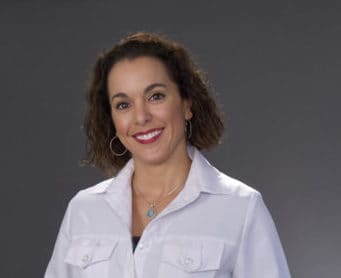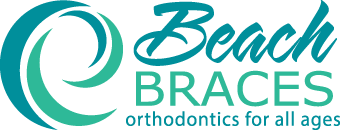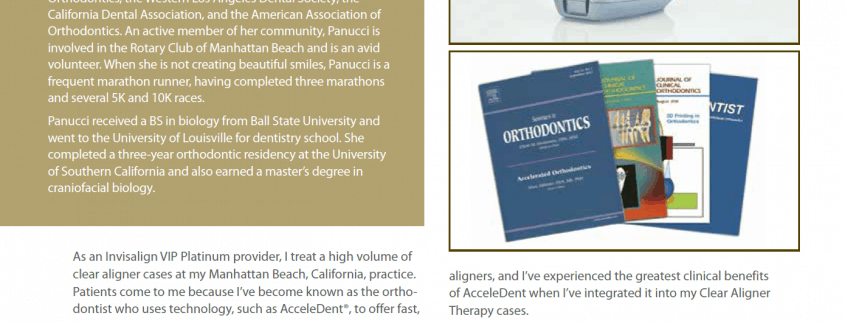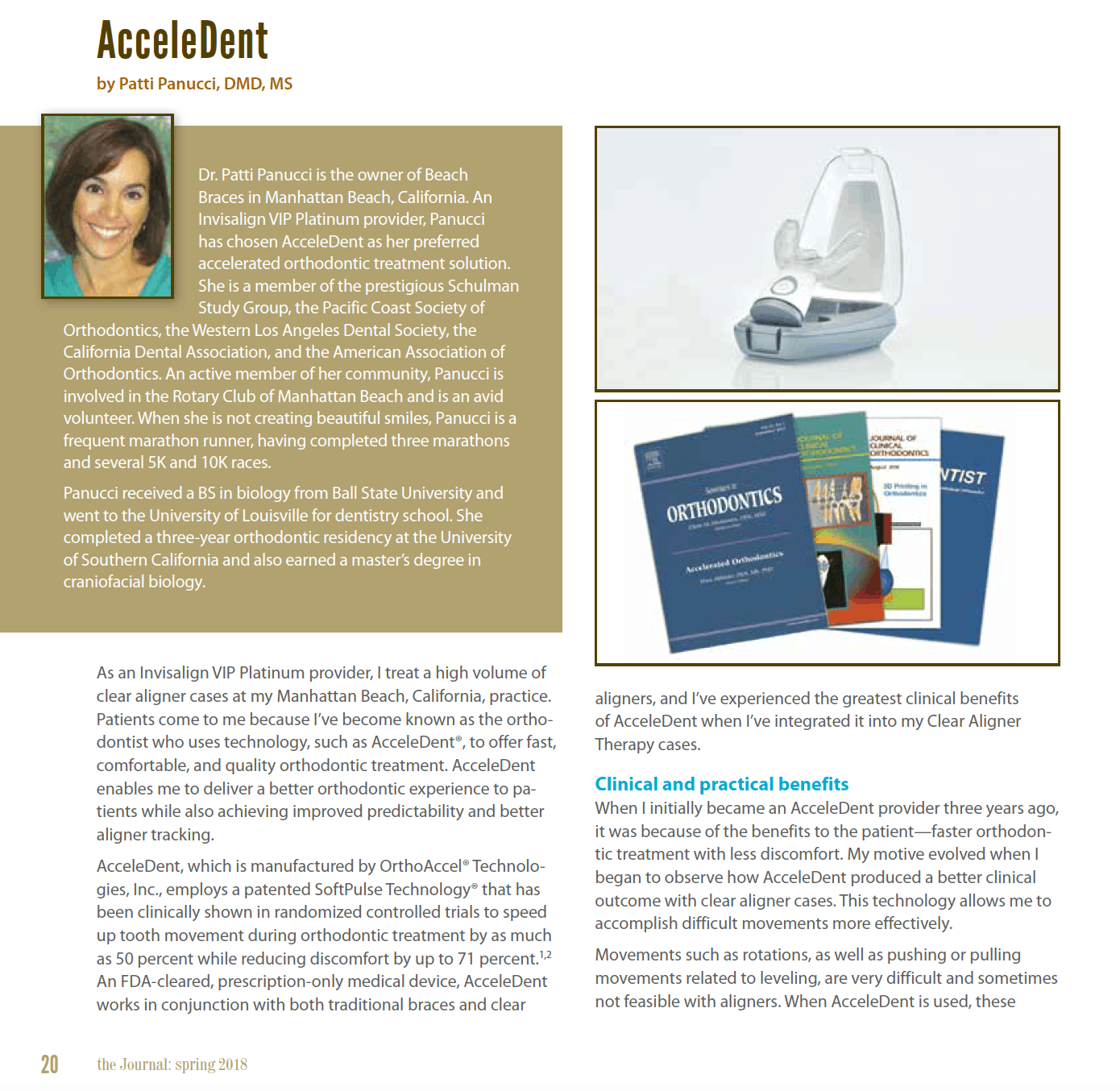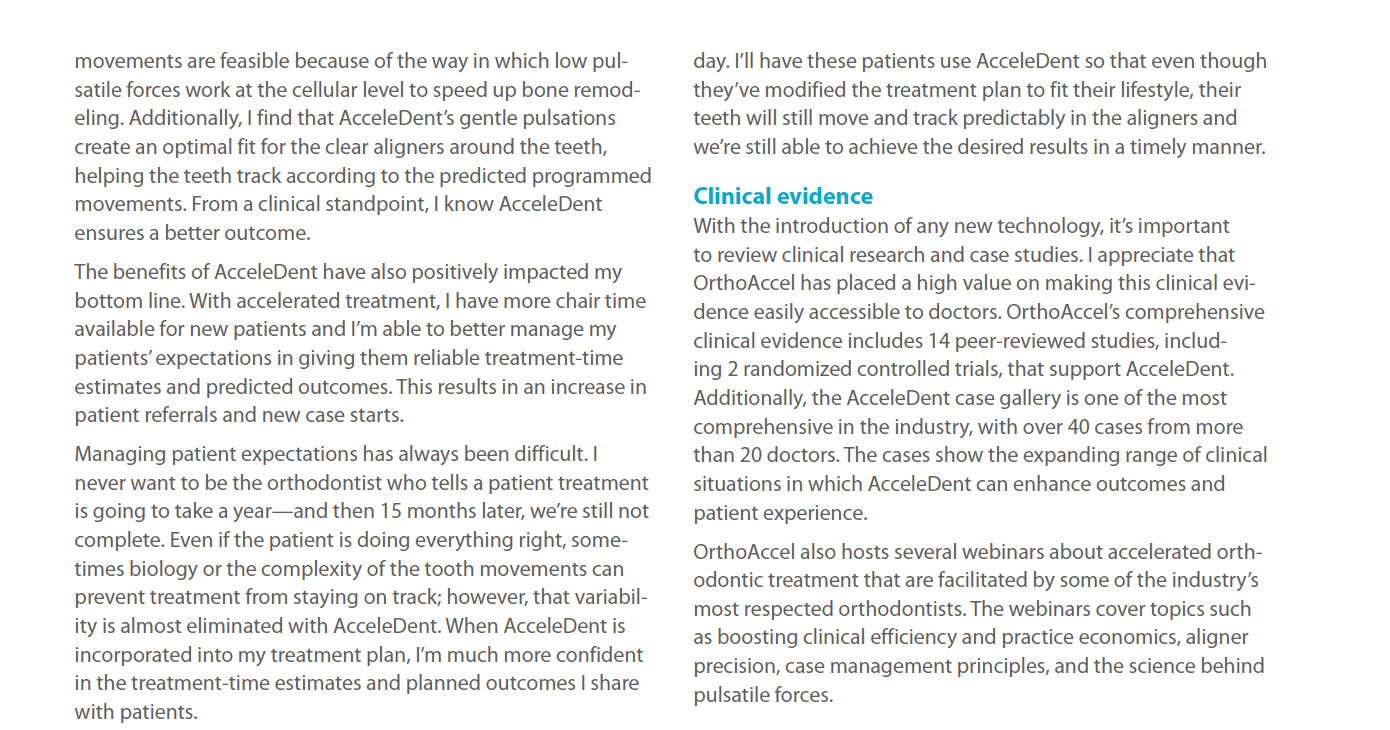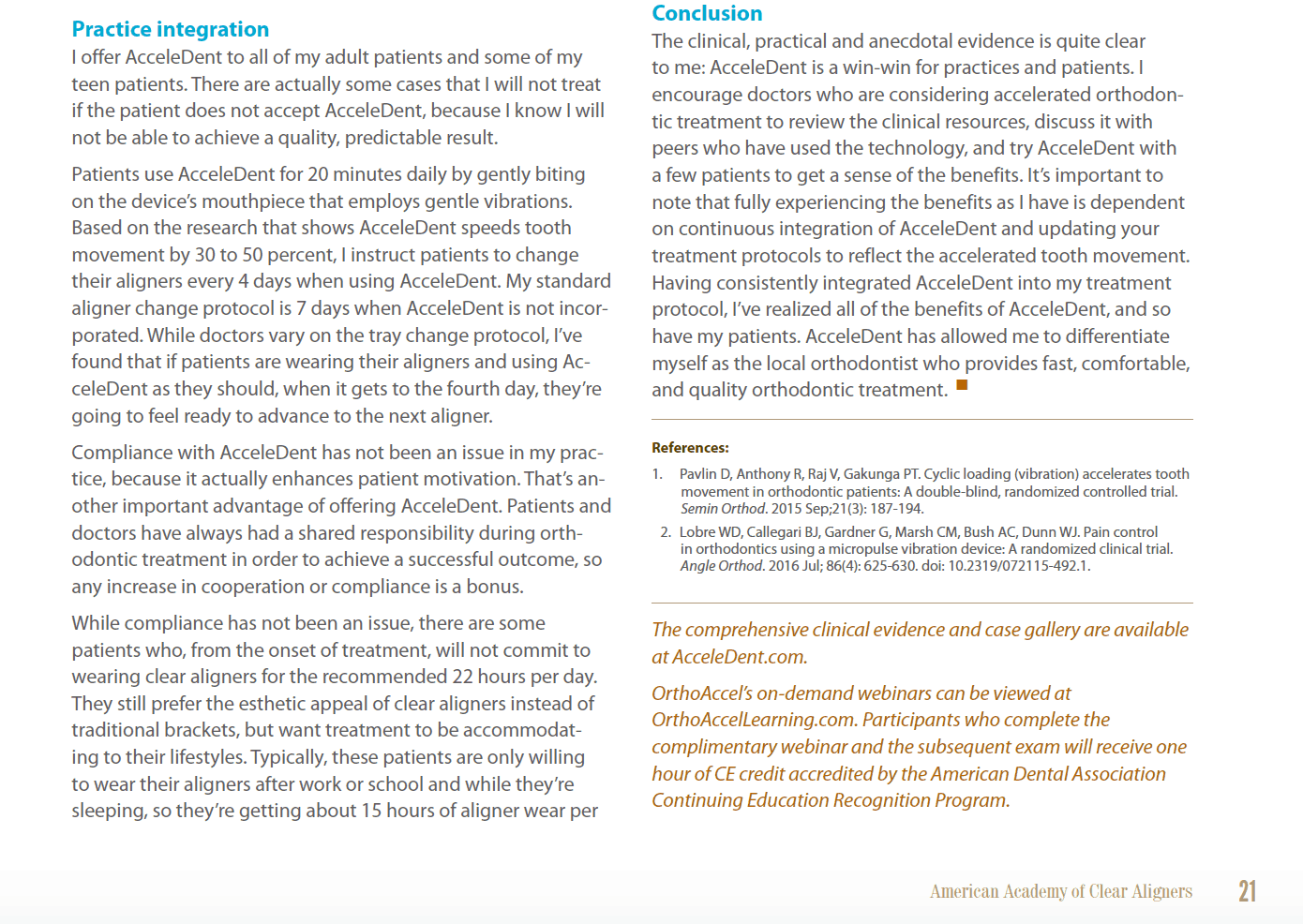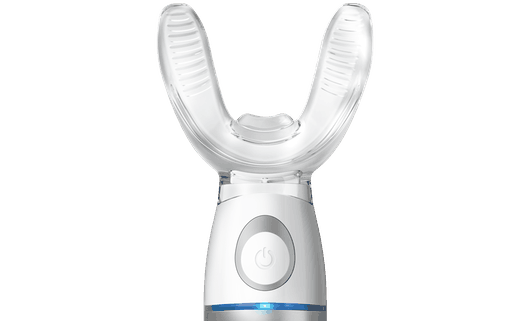Experienced AcceleDent Providers Drs. Patti Panucci and David Ostreicher Share Clinical
Benefits of Integrating AcceleDent into Aligner Treatment Protocols
PRESS RELEASE
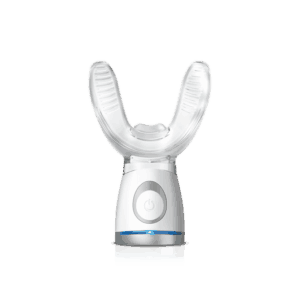 Orthodontists who offer clear aligner therapy in conjunction with AcceleDent® are reporting a better overall
Orthodontists who offer clear aligner therapy in conjunction with AcceleDent® are reporting a better overall
orthodontic experience for themselves and their patients. Experienced clinicians, Dr. David Ostreicher, who has
been offering AcceleDent for five years, and Dr. Patti Panucci, who has offered the technology for three years,
find that when patients who are receiving clear aligner therapy use AcceleDent for 20 minutes daily, teeth track
according to the predicted programmed movements, significantly reducing the need for midcourse corrections
and refinements.
Manufactured by OrthoAccel® Technologies, Inc., AcceleDent employs a patented SoftPulse Technology®
that is clinically shown in randomized controlled trials to speed up orthodontic treatment by as much as 50
percent while reducing discomfort by up to 71 percent during orthodontic treatment with clear aligners or
braces. The newest generation of the technology, AcceleDent® Optima™, has cloud connection capabilities
that enable practices to connect with patients for more proactive case management.
“AcceleDent improves the biological response of tooth movement guided by clear aligners,” said Ostreicher,
whose practice is located on Long Island in New York. “Some difficult movements like intrusions, extrusions
or rotations are hard to accomplish with aligners, but when I add AcceleDent into the treatment plan the
movements become more predictable, teeth stay on track and we finish on time with a quality result.”
An Invisalign Top 1% doctor and Align Technology lecturer, Ostreicher says that a reduction in refinements is
another key clinical benefit of AcceleDent.
In contrast to when I first started doing aligner cases, with AcceleDent the teeth actually end up in the desired
place 95 – 100 percent of the time without midcourse corrections or refinements. Without AcceleDent, I did
refinements on about 80 percent of my cases,” said Ostreicher, who serves on the advisory board of the
American Academy of Clear Aligners. “Having finished cases that meet high-quality clinical standards and
exceed patient satisfaction is very important to me so I’m very generous with refinements. For the AcceleDent
cases that do require refinements, there are considerably less aligners in these refinements compared to my
cases without AcceleDent.”
In addition to experiencing similar clinical benefits in her practice, Panucci says that AcceleDent has positively
impacted the bottom line at her practice Beach Braces in Manhattan Beach, California. She has differentiated
herself as the local orthodontist who offers fast, comfortable and quality orthodontic treatment.
“I initially became an AcceleDent provider to offer patients faster orthodontic treatment with less discomfort.
That evolved when I began to see that AcceleDent ensures a better clinical outcome and allows me to
accomplish difficult movements more effectively,” said Panucci, who is an Invisalign Elite provider and a
member of the prestigious Schulman Study Group. “As an added bonus, I have more chair time available for
new patients and I’m able to better manage my patient expectations by giving them reliable treatment time
estimates and predicted outcomes.”
Panucci adds that AcceleDent has enabled her to take on surgical cases that other orthodontists typically will
not treat. For instance, one of her patients had double jaw surgery and completed orthodontic treatment in 11
months with AcceleDent. She notes, “Surgical cases like this typically take 16-18 months, but AcceleDent
helped the healing process after the surgery and made the entire treatment experience more comfortable for the
patient.”
AcceleDent also enabled Ostreicher and Panucci to offer a nonconventional treatment option for patients who
cannot commit to wearing clear aligners for the recommended 22 hours per day. “Patients who are only willing
to wear their aligners after work and while they’re sleeping are getting about 15 hours of aligner wear per day.
I’ll have these patients use AcceleDent so that even though they’ve modified the treatment plan to fit their
lifestyle, their teeth will still move and track predictably in the aligners and we’re able to achieve the desired
results in a timely manner,” said Panucci.
Common among patients who are teachers, police officers and college students, Ostreicher says that there are a
variety of reasons why some choose to only wear their aligners a night. “I call it Invisalign PM and it really
appeals to anyone who doesn’t want to deal with aligner maintenance throughout the day and those who may be
conscious about the appearance of aligners in their mouth or the possibility that the aligners will alter their
speech.”
Orthodontists or dental professionals interested in learning more about the clinical benefits of AcceleDent and
the expanding range of clinical situations where AcceleDent can enhance outcomes and patient experience, are
invited to review case studies at AcceleDent.com or watch on-demand clinical education webinars at
OrthoAccelLearning.com.
About OrthoAccel® Technologies, Inc.
OrthoAccel® Technologies, Inc. is a privately owned medical device company engaged in the creation,
manufacturing, marketing and sales of innovative solutions that enhance dental care and orthodontic treatment.
Among the company’s innovations is AcceleDent® Optima™, an FDA-cleared, Class II medical device that
employs patented SoftPulse Technology® that produces gentle pulsating forces that are shown to speed up
bone remodeling. These safe and gentle vibrations accelerate tooth movement by as much as 50 percent and
reduce discomfort associated with orthodontic treatment by up to 71 percent. Leading orthodontists from
around the world report increased mechanical efficiency with orthodontic appliances and improved
predictability of outcomes with AcceleDent. OrthoAccel, the Leader in Accelerated Orthodontics, has been
ranked on Deloitte’s Technology Fast 500 as one of the fastest growing companies in North America for three
consecutive years. OrthoAccel is based in Houston, Texas and maintains a global presence through its EMEA
office in Essen, Germany. To learn more about OrthoAccel’s focus on improving the journey to healthy,
beautiful smiles, visit AcceleDent.com.
If you have any questions regarding information in these press releases please contact the company listed in the press release. Our complete disclaimer appears here.
Contact Information
Kristin Taylor
OrthoAccel Technologies, Inc.
http://acceledent.com/orthodontists/
(713) 524-8170
Orthodontists Consistently Achieve Improved Predictability & Better Aligner Tracking with AcceleDent
Dr Patti Panucci attended the University of Louisville School of Dentistry for four years, where she graduated with a DMD degree (May 2000) among the Top 10 in her class. Following that, she headed west to Los Angeles to complete her three-year residency at one of the top-ranked orthodontic programs in the country – the University of Southern California.
Along with her certificate in orthodontics, Dr. Panucci earned a master’s degree in craniofacial biology. During those three years, she fell in love with Southern California beach life and decided that this was where her future lay.
